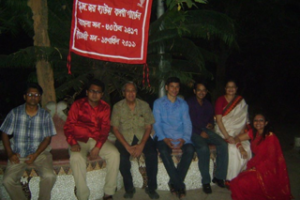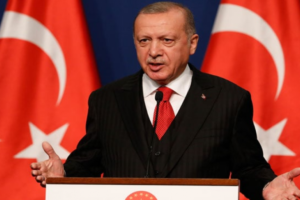US troops and their Western allies have departed the US military base that coordinated the sprawling war in Afghanistan, officials said Friday, effectively ending major US military operations in the country after nearly two decades.
For generations of US service members, the military hub, Bagram Airfield, was a gateway to and from a war that cut across constant changes on the battlefield and in presidential administrations. But the final withdrawal overnight Thursday occurred with little fanfare and no public ceremony, and in an atmosphere of grave concern over the Afghan security forces’ ability to hold off Taliban advances across the country.
The US exit was completed quickly enough that some looters managed to get into the base before being arrested, Afghan officials said.
The quiet leave-taking from the base weeks before the planned withdrawal of US troops in mid-July, and months before President Joe Biden’s announced Sept 11 departure, highlights Washington’s efforts to signal two different messages: one to the US public that its longest foreign war is ending, and another to the Afghan government that the United States is not abandoning the country in the middle of a Taliban offensive, and would retain some ability to conduct airstrikes if need be.
“We are on track, exactly where we expected to be,” Biden told reporters at the White House on Friday.
The fear that Kabul could fall to the Taliban relatively soon haunted the administration’s debate over the decision to pull out of the country. But Biden suggested that even though the United States still retained the ability to conduct airstrikes if things went bad, no reversal of the withdrawal was on the table.
“We have worked out an over-the-horizon capacity,” he said, talking about air assets based in other places, “but the Afghans are going to have to do it themselves with the air force they have.”
Bagram was operating at full capacity until the end Thursday. Fighter jets, cargo planes and surveillance aircraft relied on the twin runways until it was no longer feasible to keep them in the country.
Now air support for the Afghan forces and overhead surveillance will be flown in from outside the country, from bases in Qatar or the United Arab Emirates or from an aircraft carrier in the Arabian Sea. A contingent of 650 troops will remain to protect the US Embassy in Kabul, the capital. How long that type of support will continue is unclear, but the Pentagon has until Sept 11 — when the US military mission is supposed to formally conclude — to decide.
The departure comes at a perilous time for Afghanistan.
Some US intelligence estimates predict that the Afghan government could fall to its rivals, the Taliban, from six months to two years after the US completes its withdrawal. The Taliban are inching closer to Kabul after having taken about a quarter of the country’s districts in the past two months.
Hundreds of members of the Afghan security forces have surrendered in recent weeks, while their counterattacks have taken back little territory from the Taliban. And as the Afghan forces fracture, regional militias have appeared with renewed prominence, in an echo of the country’s path toward civil war in the 1990s.
“Civil war is certainly a path that can be visualised,” Gen Austin Miller, the top US commander in Afghanistan, told reporters Tuesday.
Early Friday, looters entered the base, grabbing gas canisters and some laptops, said Darwaish Raufi, a district administrator for Bagram, adding that some were arrested by the police.
Raufi said the Americans had failed to coordinate their departure with the Afghan forces, leaving a gap in security at the base. But Col Sonny Leggett, a spokesperson for the US-led coalition in Afghanistan, said the transfer of the base had been “closely coordinated.”
Although the past 40 years of conflict in Afghanistan could be seen as civil war, a return to the fractious era of warlords and armed fiefs has long been feared.
With a line of snow-capped mountains as its backdrop, the Bagram Airfield was built in the 1950s by the Soviet Union. It became a vital military hub during the Soviets’ 10-year occupation of Afghanistan. After the Soviets withdrew in 1989, the Taliban and what was known as the Northern Alliance fought for the base, sometimes with their trenches at either end.
When it invaded Afghanistan in 2001, after the terrorist attacks in America, the United States inherited rubble at the Bagram site. In January 2002, when the first US service member killed by enemy fire, Sgt 1st Class Nathan R Chapman, was sent home, there were no US flags to drape on his coffin, so a flag patch from someone’s uniform had to suffice.
By 2011, at the height of the war, the air base had ballooned into a small city, with two runways, tens of thousands of occupants, shops and a US military prison that became notorious. The thunder of jets and other aircraft, armed with hundreds of pounds of munitions that were dropped across the country, sometimes killing civilians, became a constant soundtrack for local residents throughout the conflict.
The base was also more violently attacked over the years, often by Taliban rockets and mortars, but sometimes by other means. In one of the worst strikes, in November 2016, a suicide bomber sneaked onto Bagram Airfield, hidden among a group of workers. The blast killed four Americans and wounded more than a dozen others.
Other foreign forces that helped guard the base as part of the US-led coalition, like those from Georgia and the Czech Republic, saw their own casualties during their deployments.
In 2014, as the United States concluded its first official drawdown after the surge of troops in the years before — which brought the number of US and other international forces into the country to well over 100,000 — Bagram began to shrink.
Local contractors were fired, troops left and the surrounding town of the same name went into a downward economic spiral. Many residents had been reliant on the base for employment, and others had sorted through the camp’s refuse for goods that could be sold or shipped to Kabul.
On Friday, Zabihullah Mujahid, a Taliban spokesperson, called the departure from Bagram a “positive step.”
With Bagram gone, what is left of the US forces in the country remain in Kabul. After Miller leaves in the next several days, his authorities to carry out airstrikes against al-Qaida and the Islamic State group, and, in very limited circumstances, against the Taliban, will be assumed by Gen. Kenneth F McKenzie Jr, the head of the military’s Central Command.
Rear Adm Peter Vasely, a former member of SEAL Team 6, will be in charge of the security mission at the US Embassy in Kabul and will report to McKenzie. Vasely, who is already in Kabul for the transition, will command the US troops that will be largely based at the embassy and remain there indefinitely.
Through September, McKenzie will also be authorised to keep about 300 additional troops in Afghanistan, if needed for security, Pentagon officials said.




















